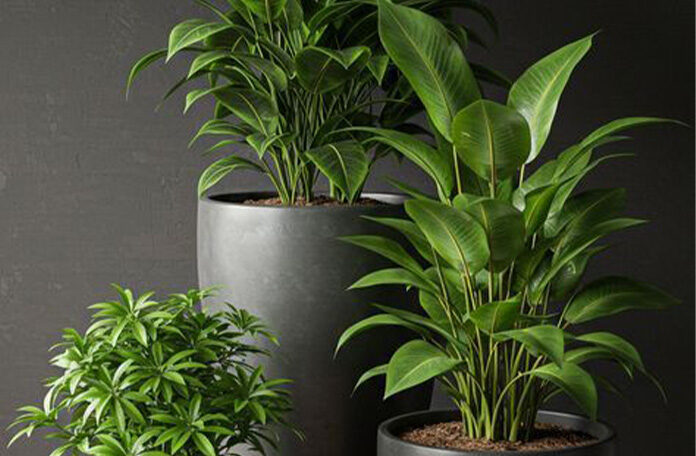In today’s fast-paced, urban lifestyle, where people spend most of their time indoors, incorporating indoor plants has become more than a design trend—it’s a proven way to enhance the quality of indoor environments. From offices and hotels to hospitals, malls, cafés, and airports, the presence of plants transforms sterile spaces into vibrant, welcoming, and health-supporting environments. This growing awareness has made indoor plant rental services a smart and sustainable solution for public and commercial spaces. Why Are Indoor Plants Important for Public Places? Public spaces often rely on artificial lighting, uniform furniture, and climate control systems that create efficient—but sometimes lifeless—environments. Indoor plants help to restore balance by: Introducing natural elements into enclosed spaces Softening hard surfaces and reducing visual fatigue Creating a more inviting and relaxing atmosphere for both customers and staff Offering a cost-effective way to beautify and refresh interiors Whether it’s a green wall in a corporate lobby or planters at a hotel reception, greenery signals care, creativity, and comfort. The Psychological Impact: Mood, Stress, and Performance Multiple studies have shown that indoor plants positively influence human emotions, mental clarity, and work performance. Here’s how: Reduced Stress Levels: Greenery triggers a calming response in the brain, reducing heart rate, anxiety, and tension—ideal for waiting rooms, hospitals, and customer service areas. Improved Mood: Access to nature—even in the form of potted plants—can boost emotional well-being, increase positivity, and reduce symptoms of fatigue and depression. Enhanced Productivity: Offices with indoor plants report higher employee focus, task completion, and creativity. Plants help regulate air quality and humidity, creating a more comfortable and stimulating work environment. Better Cognitive Function: Exposure to plants improves memory retention and concentration levels, particularly in schools and workplaces. The mere presence of plants in sightlines has been shown to increase attention span and reduce mental fatigue—a crucial benefit in high-performance or high-stress settings. Indoor Plants as Part of Interior Design Plants do more than purify air—they’re also design elements that can define a brand, express personality, and enhance architectural features. Interior designers often use plants to: Add texture, depth, and color to neutral environments Create visual flow between spaces Accentuate corners, entrances, and empty walls Complement furniture, lighting, and materials Matching the right plant with the right pot—ceramic, terracotta, fibreglass, or PVC—further enhances the visual appeal, adding elegance, minimalism, or a tropical vibe. Health & Environmental Benefits Aside from aesthetics and psychological effects, indoor plants contribute to healthier indoor air and humidity regulation: Filter airborne toxins like formaldehyde and benzene Improve oxygen levels through photosynthesis Maintain indoor humidity, especially in air-conditioned environments Suppress dust particles and allergens These benefits make indoor plants especially valuable in hospitals, clinics, and office environments where clean air and comfort are priorities. Why Choose Plant Rental Services? While having plants indoors sounds simple, maintaining them long-term is a different story. Plant rental services offer a convenient, professional solution that includes: Correct plant selection for low-light, air-conditioned, or high-traffic areas Regular maintenance, watering, pruning, cleaning, and pest control Custom pots and styling to match your interior aesthetics Flexible packages based on location size and seasonal needs This service model ensures your greenery stays lush and healthy without burdening your staff or risking plant failure. Plant Name Benefit Ideal Location Snake Plant Air purifying, low maintenance Reception, washrooms, lobbies ZZ Plant Tolerates low light & humidity Offices, meeting rooms Peace Lily Flowering and air-purifying Lounges, hotel rooms Monstera Bold foliage, modern aesthetic Showrooms, retail spaces Dracaena Tall structure, minimal care Corners, beside workstations Aglaonema Colorful leaves, compact growth Hallways, desk clusters Final Thoughts Indoor plants are not just decorative—they are essential. They improve air quality, boost human health, elevate moods, and enhance the design experience. Especially in busy, high-use public environments, greenery plays a key role in making spaces healthier, more attractive, and more productive. With professional plant rental services, businesses and public facilities can enjoy all these benefits without the burden of daily care—ensuring every plant is healthy, well-placed, and thriving. Written by M.F. Iqbal Landscape Architect & Horticulturist Passionate about sustainable outdoor design and green living.

